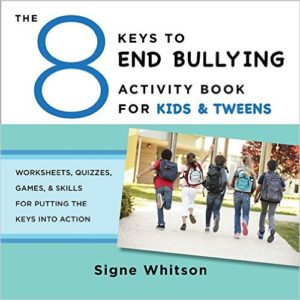Bullyproofing: Is it Tattling or Telling?
In the 8 Keys to End Bullying Activity Book for Kids & Tweens, I address a very common–and very challenging–issue among young people: knowing the difference between tattling and telling.
among young people: knowing the difference between tattling and telling.
Many kids worry that they may be called a tattletale (or worse!) if they tell an adult about unwanted aggression. And so, out of fear, they make the unfortunate decision to go it alone (which is exactly what a child who bullies wants them to do because it leaves them in an isolated, less powerful position).
Still, other young people become overzealous in seeking adult help at the very first hint of a disagreement or conflict situation. They purposefully tattle on their peers, even in non-dangerous situations, with a singular goal of getting others into trouble. In these situations, kids usually make no attempt to use their own problem-solving skills to manage the situation.
There is a helpful way for kids to understand when a situation calls for independent problem solving and when it calls for the courageous act of reaching out for adult help. Activities 6-7 in the Activity Book teach kids 6 Simple Rules for distinguishing between tattling and telling and show them how to apply these rules to common situation in their everyday lives.
You can find the full activities in the 8 Keys to End Bullying Activity Book and download the free pocket guide to Tattling or Telling? here, using the link below.
#beknownforbeingkind
Leave a Reply